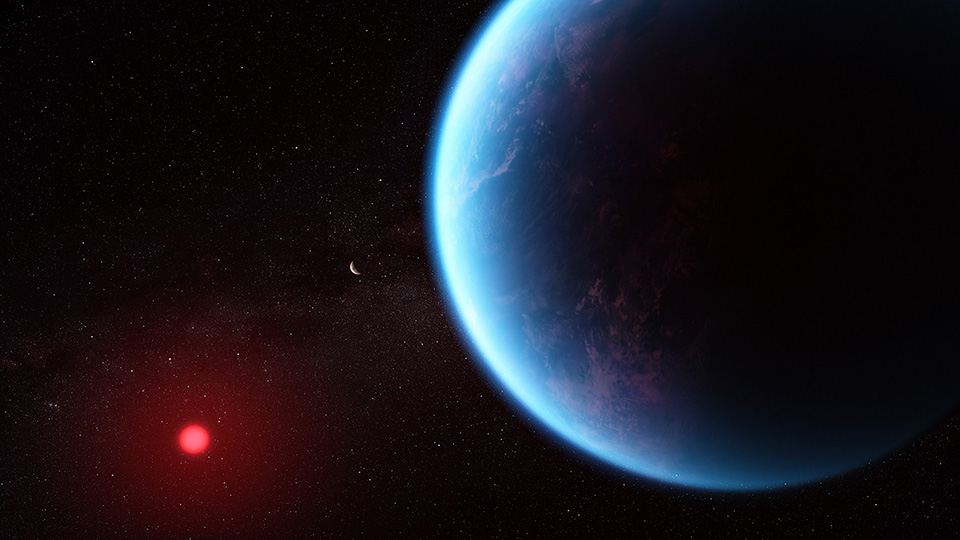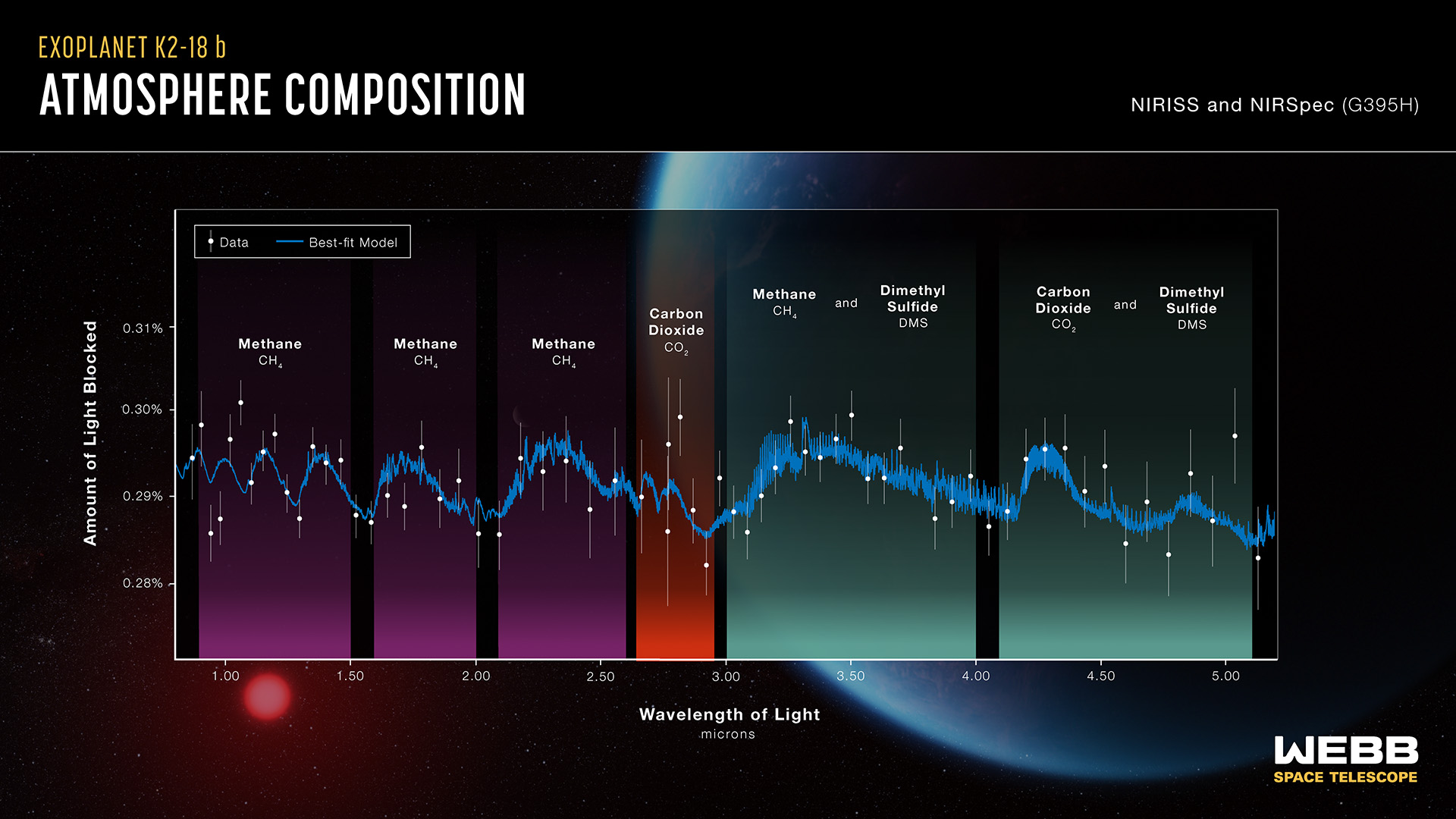K2-18 b’s spectrum suggests methane and carbon dioxide but hints at dimethyl sulfide too.
Key Takeaways
- The James Webb Space Telescope (JWST) identified methane and carbon dioxide in K2-18 b’s atmosphere.
- K2-18 b, a sub-Neptune exoplanet, may have a hydrogen-rich atmosphere and water-covered surface.
- The potential detection of dimethyl sulfide (DMS), a molecule linked to life, sparks interest.
- K2-18 b orbits a cool dwarf star in the habitable zone, 120 light-years from Earth.
- JWST’s observations highlight the promise of Hycean worlds in the search for extraterrestrial life.’
___________
Methane and Carbon Dioxide in K2-18 b’s Atmosphere
NASA’s James Webb Space Telescope (JWST) has detected carbon-bearing molecules, including methane and carbon dioxide, in the atmosphere of the exoplanet K2-18 b. This groundbreaking discovery strengthens the theory that K2-18 b could be a Hycean exoplanet, characterized by a hydrogen-rich atmosphere and potentially water-covered oceans.
K2-18 b, located 120 light-years away in the Leo constellation, is eight times the mass of Earth and orbits a cool dwarf star within the habitable zone. First identified in 2015 through NASA’s K2 mission, K2-18 b’s atmospheric composition was initially studied by the Hubble Space Telescope. However, Webb’s superior sensitivity and extended wavelength range enabled astronomers to collect detailed spectral data during just two transits, revealing clear traces of methane and carbon dioxide and ruling out significant amounts of ammonia.
Notably, Webb’s observations suggested the possible presence of dimethyl sulfide (DMS), a molecule on Earth predominantly produced by life, such as marine phytoplankton. While the DMS detection requires further validation, it raises exciting possibilities about the exoplanet’s potential habitability.

The Quest for Life on Hycean Worlds
K2-18 b’s large size and sub-Neptune classification mean it differs significantly from planets in our solar system. Its interior likely features a high-pressure ice mantle, with a thinner hydrogen atmosphere overlaying an ocean. However, the possibility of habitability depends on whether this ocean is temperate or excessively hot. Hycean exoplanets, such as K2-18 b, are emerging as promising targets in the search for extraterrestrial life due to their conducive environments for atmospheric analysis.
Led by Nikku Madhusudhan of the University of Cambridge, the research emphasizes the importance of exploring diverse exoplanet types beyond rocky Earth-sized planets. “Our findings underscore the significance of investigating Hycean worlds,” Madhusudhan said, highlighting Webb’s role in unraveling such mysteries. The detailed findings have been accepted for publication in The Astrophysical Journal Letters.

Webb’s advanced technology allowed the team to bypass challenges posed by the glare of K2-18 b’s host star by analyzing light filtered through the planet’s atmosphere during its transit. This innovative approach significantly improves the precision of atmospheric data collection, far surpassing Hubble’s capabilities.
Future observations using Webb’s MIRI spectrograph are expected to confirm the presence of DMS and deepen understanding of K2-18 b’s environmental conditions. As Savvas Constantinou from the research team noted, this study is an early demonstration of Webb’s potential, paving the way for identifying life on habitable-zone exoplanets.




